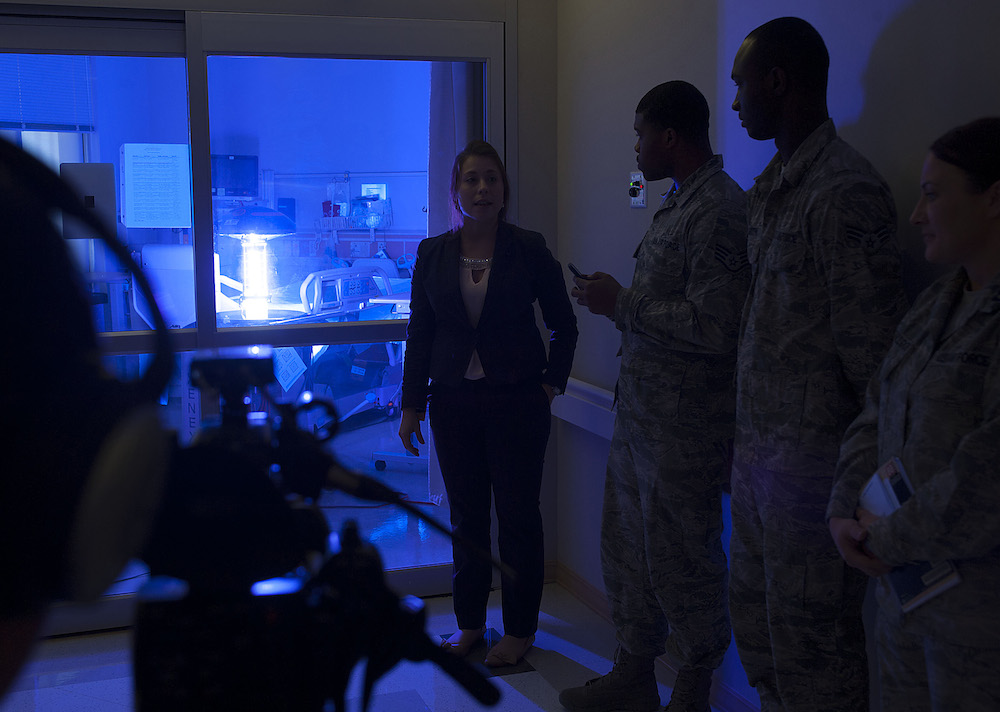Germ-Zapping Robot Could Fight Ebola and Other Deadly Viruses

A new germ-zapping robot could help stop the spread of deadly viruses, like Ebola, in hospitals and other health care facilities in the United States.
Standing a little more than 5 feet (1.5 meters) tall, the robot — nicknamed "Saul" — uses pulses of high-intensity, high-energy ultraviolet rays to split open bacterial cell walls and kill dangerous pathogens, said Geri Genant, a health care services implementation manager with Xenex, the company that developed the robot.
A surgical team at the U.S. Air Force Hospital Langley in Hampton, Virginia, was recently trained to use the virus-destroying robot, which can kill a single strand of ribonucleic acid (RNA) — similar to that of the Ebola virus— in less than 5 minutes, Genant said. [The 9 Deadliest Viruses on Earth]
"Hospitals that have used this have been able to bring infection rates down, in many cases [by] 60 percent," Genant said in a statement. The hospitals Genant was referring to were presumably not those affected by the Ebola epidemic.
The robot's latest pit stop, Langley Air Force Base, is home to the U.S. military's 633rd Medical Group, a group of service members who recently returned from an assignment in West Africa. There, they were charged with setting up a medical support facility in one of the West African countries hardest hit by the Ebola outbreak, according to the Air Force. The team also trained international health care workers on how to use the facility's equipment.
Although the 633rd Medical Group allegedly had no exposure to the Ebola virus or to Ebola victims during its time in Africa, the U.S. military is still taking every precaution to prevent Ebola from spreading in the U.S., should one or more of the military's recently returned service members fall ill with the virus. Everyone involved with the mission is being monitored twice daily for three weeks after their return to the U.S., and so far, no symptoms of the virus have been reported.
The new virus-killing robot at Langley Air Force Base is an added precaution that provides patients, as well as medical staff, with an additional measure of safety, said Marlene Kerchenski, the 633rd MDG surgeon general chief of nursing services.
Get the world’s most fascinating discoveries delivered straight to your inbox.
Staff members wearing proper protection equipment traditionally clean hospital rooms at Langley using chemicals that are known to kill harmful viruses, bacteria and fungi. However, these pathogens can still linger in some areas, according to Air Force officials. The Ebola virus, for example, can survive on dry surfaces — like doorknobs and countertops — for several hours if those areas are not properly disinfected, according to the Centers for Disease Control and Prevention.
But Saul the robot's ultraviolet rays, which are 25,000 times brighter than florescent lights, can kill the pathogens that human hands miss, according to officials at Xenex.
"Xenex has tested its full spectrum disinfection system on 22 microorganisms, studying nearly 2,000 samples in several independent labs all over the world," Genant said. The bot can destroy viruses similar to Ebola with an efficiency rate of 99.9 percent, she added.
Hospital staff at Langley will continue to receive training on the proper use of the disinfecting robot, which will soon be used to help eradicate and control viruses throughout the hospital.
Follow Elizabeth Palermo @techEpalermo. Follow Live Science @livescience, Facebook & Google+. Original article on Live Science .


